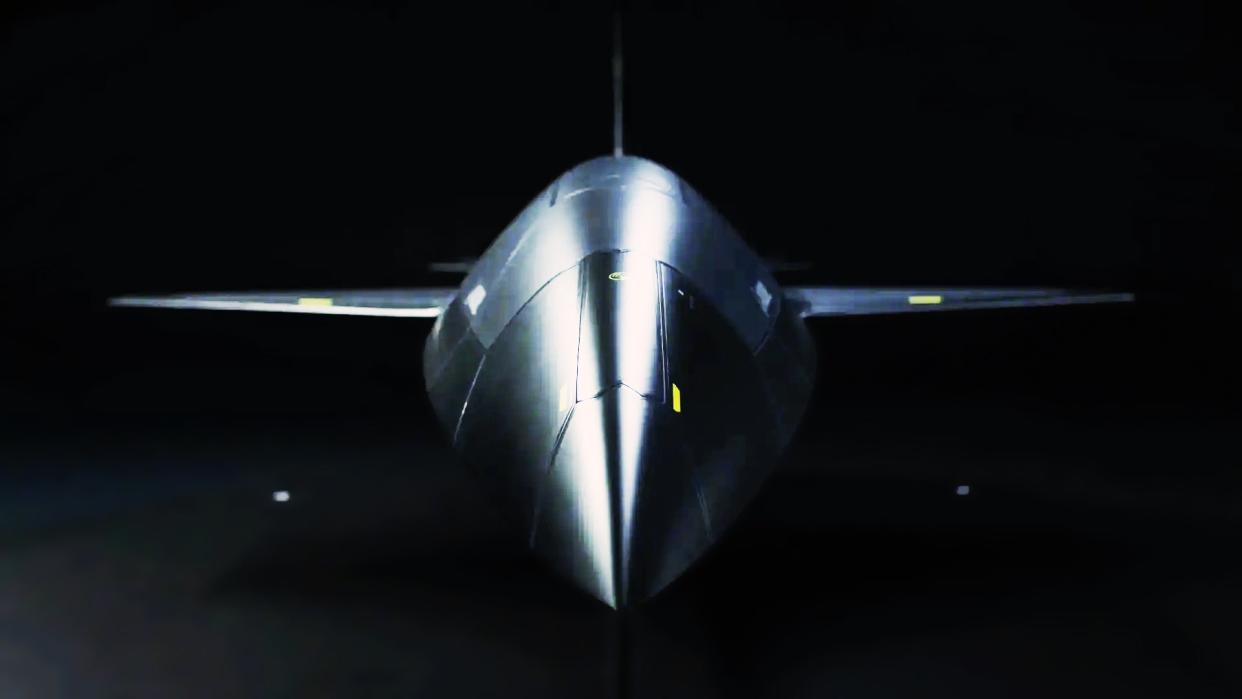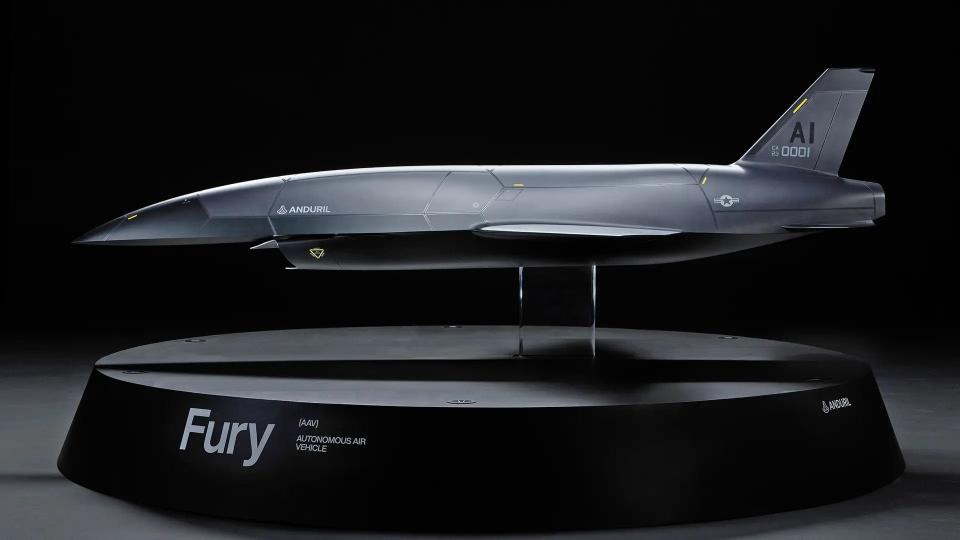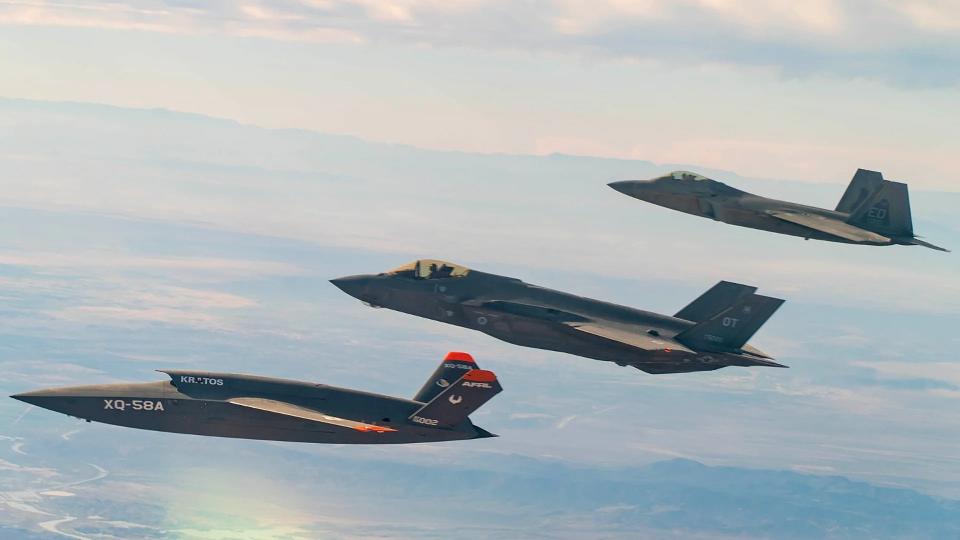Anduril Is Helping The Air Force To Develop Its Loyal Wingman Drone

Anduril has become the first contractor to formally announce that it supporting the U.S. Air Force's Collaborative Combat Aircraft advanced uncrewed aircraft program. This comes as the service says this program is progressing slower than it would like due to budgetary issues and amid emerging concerns about the cost and capabilities of the future drones.
A brief press release Anduril put out today says it is one five vendors the Air Force has chosen to help develop its future Collaborative Combat Aircraft (CCA). The service said last year that a number of companies were under contract to conduct CCA-related work, but declined to name any of them. Last month, Breaking Defense reported that Boeing, General Atomics, Lockheed Martin, and Northrop Grumman were the other four contractors working on the CCA program, citing anonymous sources. That story added that some of these companies could be eliminated in a down-select later this year.

When contacted for more information about exactly how it is now contributing to the CCA development effort, Anduril told The War Zone that it could not currently provide any more details "given sensitivities," which it did not elaborate on. We have also reached out to the Air Force for additional information.
Last year, Anduril did notably acquire small aviation firm Blue Force Technologies, which had been developing an advanced drone called Fury that has long seemed very much in line with the Air Force's CCA requirements. You can read more about the Fury, its expected capabilities, its origins, and Anduril's plans for the design in great detail in this feature The War Zone published last September.
https://www.youtube.com/watch?v=WQMrv_utQwo
Anduril also produces Lattice, which it describes as an "artificial intelligence-enabled software platform that enables teams of autonomous systems to dynamically collaborate to achieve complex missions, under human supervision." This could also be very relevant to the CCA program.
https://www.youtube.com/watch?v=RpFFScTovII
The CCA program is presently focused on the development and acquisition of at least one type of advanced "loyal wingman"-esque drone with a high degree of autonomy. These uncrewed aircraft are expected initially to operate closely together with stealthy Air Force F-35A Joint Strike Fighters and the future crewed sixth-generation Next Generation Air Dominance (NGAD) combat jet. The drones could potentially operate together with other types of aircraft, including non-stealthy fourth-generation fighters and the B-21 Raider stealth bomber, or independently, in the future. CCA is another element of the larger NGAD family of programs, which also includes new weapons, sensors, networking and battle management suites, advanced jet engines, and more.
"We commend Secretary Kendall and the U.S. Air Force for their leadership and commitment to integrating new technologies into the force," Anduril said in its release today. "We are honored to be the only non-traditional defense company selected to be a part of the CCA program."
The specific mention of being a "non-traditional defense company" here is noteworthy. Large established defense contractors like Lockheed Martin, Northrop Grumman, Boeing, General Atomics, and Raytheon have largely dominated the discussion about CCA-relevant developments in recent years.
https://www.youtube.com/watch?v=fWYY6KHIrK4
Anduril regularly highlights its position as a 'disruptor' in the U.S. defense industrial space and its novel developmental, production, and general business practices, as you can read more about here. The company has steadily expanded its portfolio, with focuses on artificial intelligence software and smaller drones, since its founding in 2017.
The Air Force has also been touting its efforts to make use of novel contracting and other processes to help accelerate the CCA program. Air Force Lt. Gen. Richard Moore, Jr, the Deputy Chief of Staff for Plans and Programs, spoke about this just yesterday at a public event hosted by the Center for Strategic & International Studies (CSIS) think tank in Washington, D.C.
"The thing about this that's innovative with CCAs, in particular, is the Secretary [of the Air Force Frank Kendall] asked us: 'Please don't go to industry and give them a requirement. The last thing in the world we want to do is tell them what to build. We want to go to them with questions and we want to find out what they can do. What is the art of the possible and what is it that they could provide? And let's allow the envelope to expand by not constraining it with a requirement," Moore said.
"I think what we're starting to see now is that there are a lot of thoughts out there, some of them ... not necessarily from the large defense primes [traditional prime contractors], that really will will be beyond what we would have conceived had we decided to write a requirement," Moore added. "So it is exciting to see what's coming. And I think the the way that this is innovative is something that will transition to other programs. I don't think that this is one and done, because I think that we're going to find it to be wildly successful."
https://www.youtube.com/watch?v=aLzZIDaAb5A\u0026t=332s
Moore also specifically mentioned "non-traditional sources" supporting the CCA program that had emerged through the Small Business Innovation Research (SBIR) program. SBIR is a U.S. government contracting mechanism that focuses on smaller deals with smaller companies to help foster technical innovation. The initial work on the Fury drone was through SBIR contracts.
All of this being said, the Air Force has made clear that it is not moving ahead with CCA as fast as it wants. The service has blamed this primarily on broader budgetary disputes between President Joe Biden's administration and Congress that are currently impacting the U.S. government as a whole. Secretary of the Air Force Frank Kendall has been particularly outspoken over the years about the problems that short-term spending packages, commonly called continuing resolutions (CR), rather than full annual budgets, impose on the U.S. military broadly.
"We're going to be limited in terms of forward progress based on the CR," Kristyn E. Jones, the senior official currently performing the duties of the Under Secretary of the Air Force, also said at yesterday's CSIS event, speaking alongside Lt. Gen. Moore. "CCA, as I mentioned – you know, we've made some progress being able to award contracts to some of the initial designers, but we can't ramp that."
The Air Force has said in the past that it wants to acquire at least 1,000 CCAs, and likely many more, and that it wants to begin major production of the drones within the next five years. At present, the expected cost of a single CCA is estimated to be around one quarter to one third of the unit price of an F-35 stealth fighter. This would put the price point for one of these future drones at between roughly $20.5 million and $27.5 million, based on public data about current F-35 unit prices.

The 1,000 CCA figured is based around a notional concept of operations involving a pair of the drones operating together with each of 200 NGAD combat jets and 300 F-35As. The Air Force has also previously said that a single crewed aircraft could oversee more CCAs in the future.
In addition, despite Moore's comments about the Air Force trying not to set firm requirements for the future CCAs, the service is clearly working to define several key parameters. From what has been disclosed so far, the CCA effort looks to be leaning toward designs with less range and higher performance than had previously been envisioned, and that will be at the high end of the expected unit cost range as a result. This, in turn, has already prompted Congress to voice concerns about the direction of the program.
The Air Force has made clear that the CCA program, however it might continue to evolve, is central to its future operational vision. The service sees the drones as especially critical for providing advanced capabilities in high volumes at a relatively low cost, a concept it currently refers to as "affordable mass." This kind of capacity is seen as particularly essential for success in any future high-end conflict, such as one against China in the Pacific.
In the meantime, much about the overall CCA program still seems to be in flux. The Air Force does now seem be working to coalesce the effort around a core group of contractors, including Anduril.
Contact the author: joe@thedrive.com

